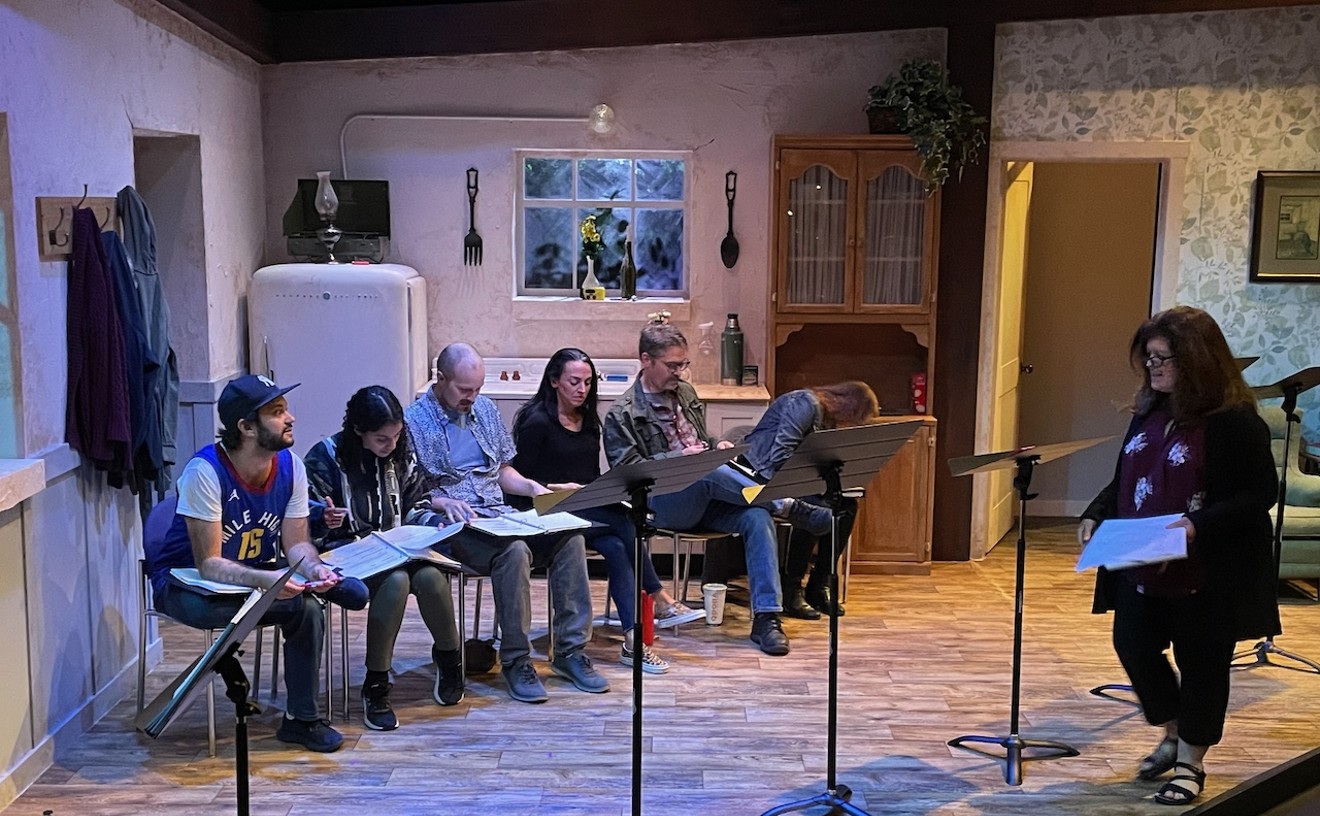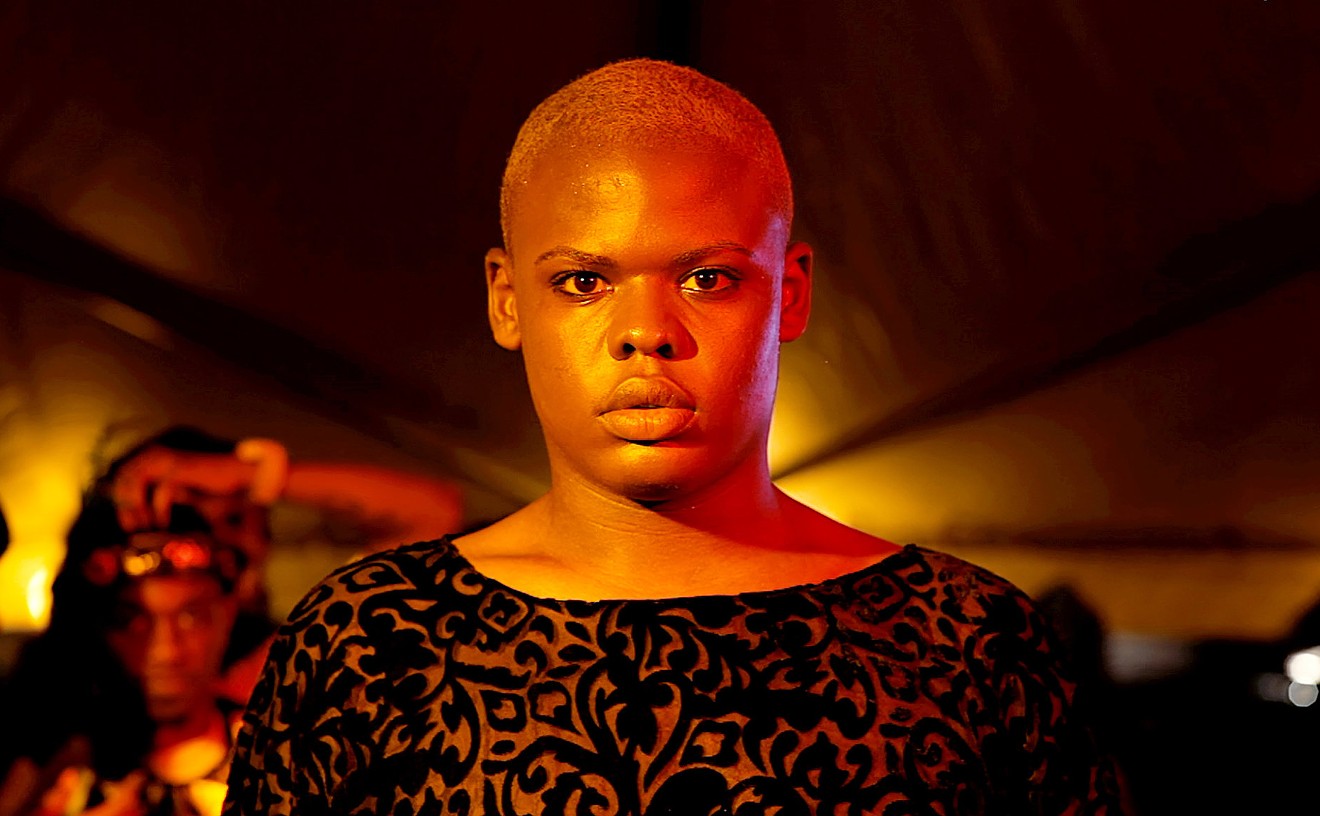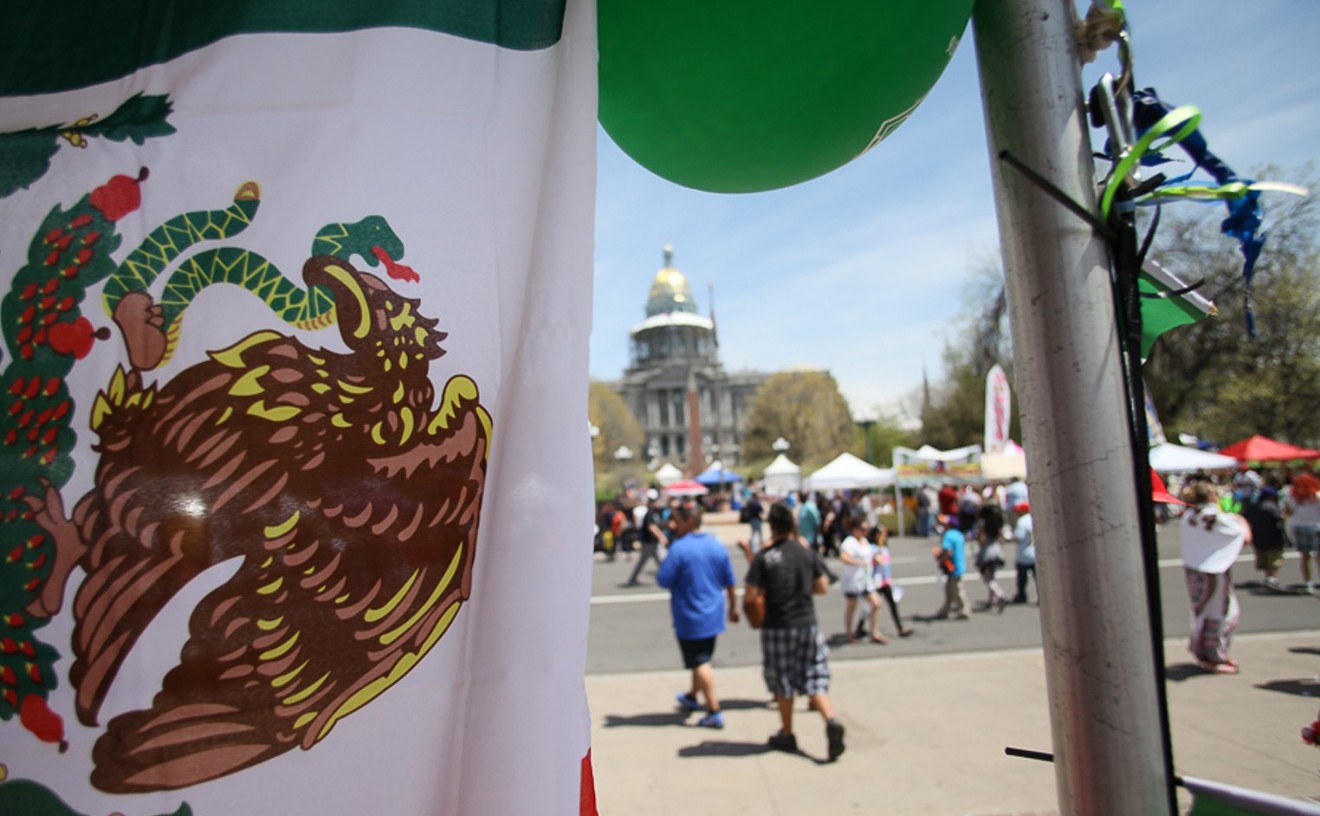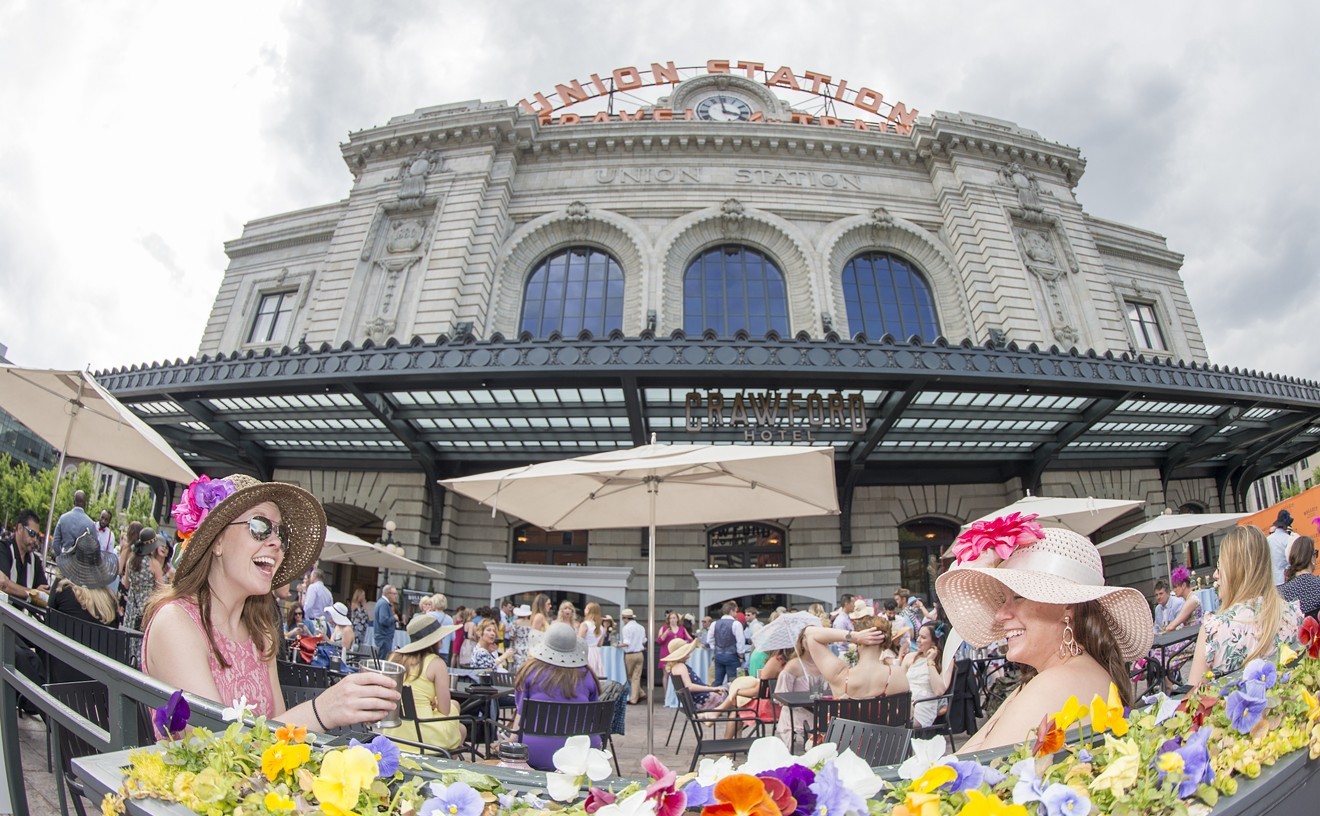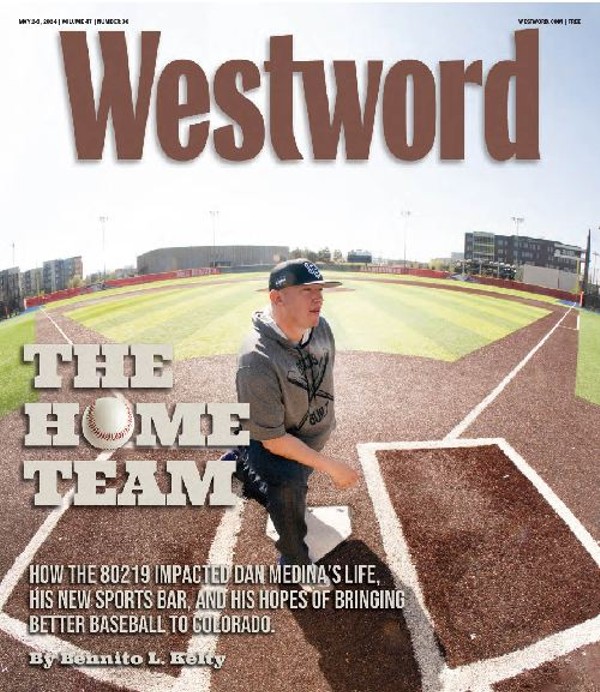Though there are many artist couples, it’s unusual for both halves to wind up becoming internationally renowned. But that’s the case with contemporary artists Deborah Butterfield and John Buck. The two have individual studios in both Montana and Hawaii, and have each built impressive reputations based on their highly distinctive works. Even more unusual is to find them in dueling solos in the same town — as is the happy circumstance we have in Denver right now.
I’ll begin with Deborah Butterfield: The Nature of Horses at the Denver Botanic Gardens, an exhibit that includes a selection of horse sculptures surveying the last quarter-century of Butterfield’s career. When the show opened a couple of months ago, I had a chance to walk through it with Butterfield, and her remarks were very enlightening. Born in Southern California in 1949, she grew up with horses and developed an early interest in riding them, which she still does today. Later, while a graduate student at the University of California, Davis (where she met Buck), she was inspired by Manuel Neri, one of her teachers. Neri is famous for his figural abstractions of women, and Butterfield knew she didn’t want to sculpt the figure, since that’s what Neri was doing. She chose to create abstracted sculptures based on horses instead. Her earliest versions were done in the ’70s and were made of adobe and twigs, and were thus very fragile. The DBG show picks up the story twenty years later.
Most of the sculptures here have been made by assembling bronze casts of tree limbs arranged in the form of a horse — not a realistic rendition, but an evocation. Butterfield has collected interesting-looking twigs for decades. She picks the particular ones she wants to use in a piece and then begins to build the form. This creates a model — sometimes made of hundreds of separate wood pieces — that is extensively documented in photos. That piece is then disassembled, with molds made of each twig; the molds are subsequently cast in bronze. Using the photos, the bronze “twigs” are welded into place and the whole thing is patinated; the finished effects perfectly ape the appearance of the original bark on the wood. Both the stunning casting and spectacular finishing are done by the Walla Walla Foundry, a company with which Butterfield has had a long association.
Butterfield depicts the horses either standing or reclining, sometimes combining one of each into a single composition, as in the pairing of the upright “Silver Bow” with the recumbent “Cascade.” (As an aside, these pieces were recently restored under Butterfield’s supervision after they’d been run over by a car!)
There is also a single sculpture, “Luna,” that is made of welded scrap metal, an entirely separate current in Butterfield’s work. In such pieces, she appropriates the already existing colors and textures, with no casting or patinating. In a lot of ways, they represent a response to John Chamberlain’s famous abstract-expressionist sculptures from the mid- to late twentieth century. Butterfield has a huge collection of twisted bits of metal that have been separated by color and shape into piles — just like the twigs.
Butterfield has gone a long way by abstracting the horse, creating a wholly unique approach. Her husband also creates idiosyncratic work, but interestingly enough, Buck has gone in a different direction. He conventionalizes recognizable imagery as opposed to abstracting it, as Butterfield does. This characteristic is shown off in John Buck, a remarkable solo at Robischon Gallery. Breathtaking and ambitious, the exhibit is among the most impressive gallery shows I’ve ever seen.
It includes a nice selection of the monumental woodblocks that are arguably Buck’s best-recognized works. In them, he combines a wide array of influences, including surrealism and Asian art. Buck’s approach to the rendering of subjects also has a dumb art or funk aspect to it, so there’s an innocent quality to his drafting combined with an expert sense for composition that represents a pleasing collision of naiveté and sophistication.
Having this same dynamic are his beautifully executed wall-relief panels, in which wood carvings of birds, fish and objects as varied as wigs and microscopes are set behind organizing frameworks. These panels have a heraldic character to them, courtesy of that conventionalization. There are also some static sculptures in carved wood here — notably, three female nude figures that have geometric grills instead of heads.
The woodblocks, the bas-reliefs and the sculptures are all marvelous (and are the basis of Buck’s fame), but, honestly, you will have to discipline yourself to even notice them, as the show also includes five automatons — four of which are monumental — that represent one showstopper after another.
The first one, completed about a decade ago, is the simplest. “Omnibus” is a rotating globe that operates via some emphatic cogs, powered by a hidden motor. This is essentially the formula for the others, but “Omnibus” hardly prepares you for the first of the enormous ones, “Cat’s Cradle,” which is out of this world. It’s in the form of a boat, and Buck has filled it with figures, including ones representing the Native American, the missionary and a demonic oarsman, among others. In the center, a pierced cube in a secessionist pattern rises from the roof of a model of a Catholic church.
It goes without saying that the topic is the discovery of America. The whole thing is mechanized, with the scores of wooden pieces connected to strips of leather that are pulled by a hidden machine, allowing the parts to move. One unforgettable vignette is a carving of Our Lady of Guadalupe used as the boat’s figurehead, which “cries” a rosary of wooden tears linked by leather thongs.
The other three automatons are equally as impressive. In “The Muse,” which is much more modest, a headless female figure has an elaborate set of moving gears where her head should be. More theatrical is “Borrowed Time,” another headless figure, this one with painted scenery on either side that moves via rollers and a wheel accented with hands revolving above her shoulders.
The last, “State of the Union,” which is also the newest, skewers politics with irreverent references aimed at both religion and government. One of the many intriguing aspects of this piece is the flying bats that are exiting the church, with a devil’s tail coming out the other side. The two men sawing a tree is a really cool element, too.
I’ve seen a lot of shows over the years, and few of them have been as strong as either Butterfield or Buck. So it goes without saying that I strongly recommend that you check both out before they close.
Deborah Butterfield
Through October 18 at the Denver Botanic Gardens, 1007 York Street, 303-865-3500, botanicgardens.org.
John Buck
Through August 29 at Robischon Gallery, 1740 Wazee Street, 303-298-7788, robischongallery.com.
[
{
"name": "Air - MediumRectangle - Inline Content - Mobile Display Size",
"component": "12017618",
"insertPoint": "2",
"requiredCountToDisplay": "2"
},{
"name": "Editor Picks",
"component": "17242653",
"insertPoint": "4",
"requiredCountToDisplay": "1"
},{
"name": "Inline Links",
"component": "18838239",
"insertPoint": "8th",
"startingPoint": 8,
"requiredCountToDisplay": "7",
"maxInsertions": 25
},{
"name": "Air - MediumRectangle - Combo - Inline Content",
"component": "17261320",
"insertPoint": "8th",
"startingPoint": 8,
"requiredCountToDisplay": "7",
"maxInsertions": 25
},{
"name": "Inline Links",
"component": "18838239",
"insertPoint": "8th",
"startingPoint": 12,
"requiredCountToDisplay": "11",
"maxInsertions": 25
},{
"name": "Air - Leaderboard Tower - Combo - Inline Content",
"component": "17261321",
"insertPoint": "8th",
"startingPoint": 12,
"requiredCountToDisplay": "11",
"maxInsertions": 25
}
]




